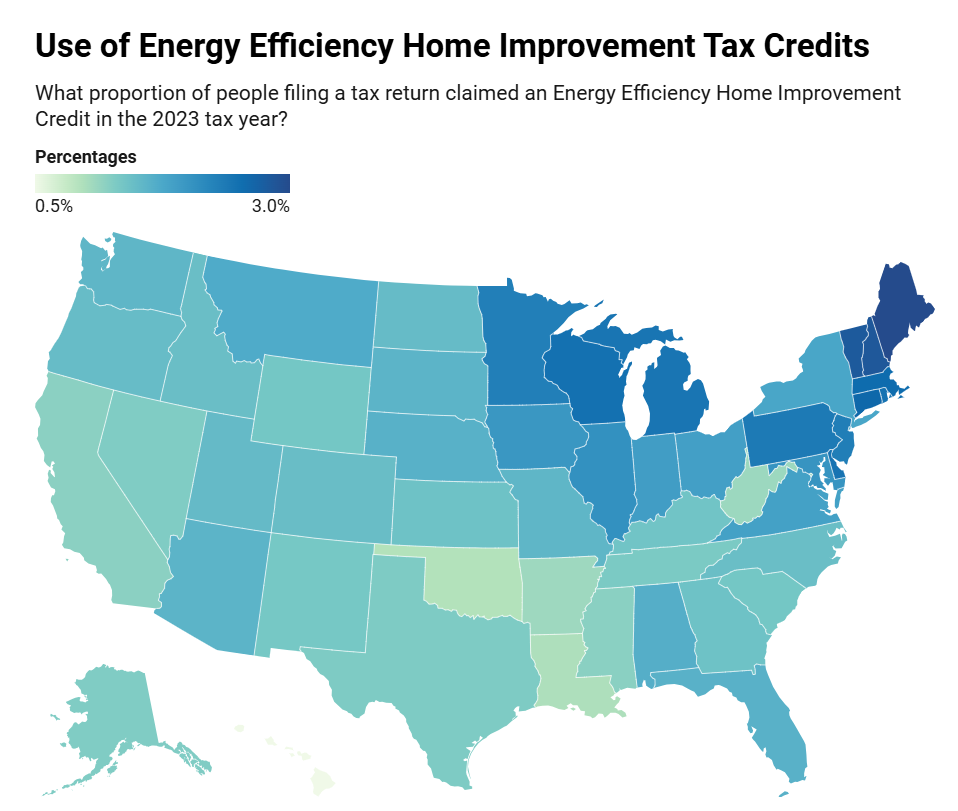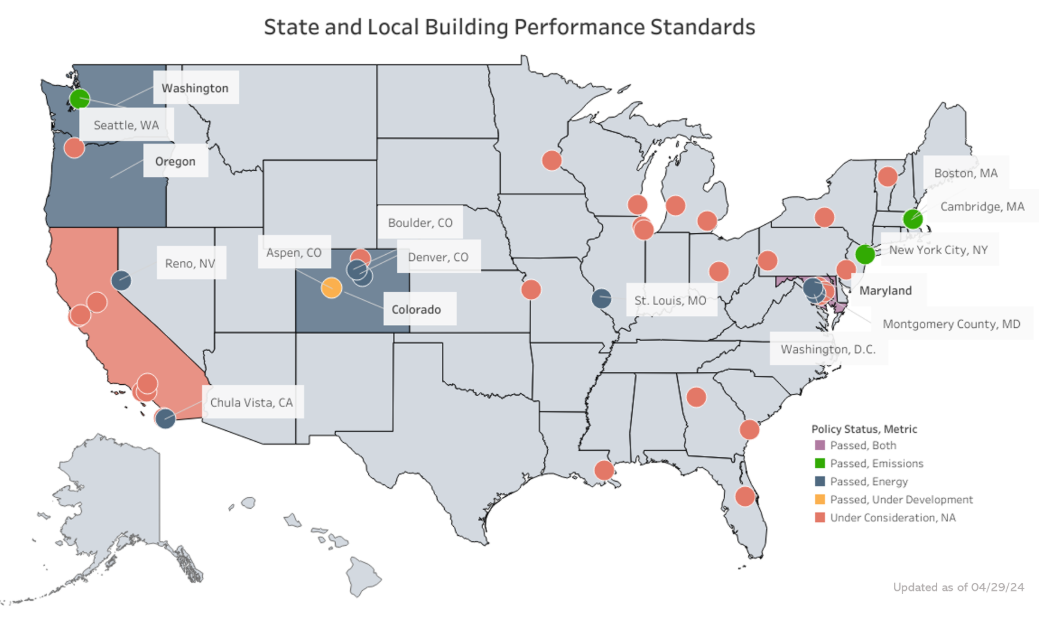Month: January 2025
Lauren Casentini Appointed 2025 Chair of the Southeast Energy Efficiency Alliance (SEEA)
FOR IMMEDIATE RELEASE
Lauren Casentini Appointed 2025 Chair of the Southeast Energy Efficiency Alliance (SEEA)
Atlanta, GA – January 29, 2025 – The Southeast Energy Efficiency Alliance (SEEA) and Resource Innovations are pleased to announce that Lauren Casentini, Chief Executive Officer at Resource Innovations, has been named Chair of the SEEA Board of Directors for 2025. As Founder and CEO of Resource Innovations, and former executive and board member for the largest energy efficiency firm in the U.S., she’s changing how utilities navigate the clean energy transition. With a proven track record of innovation, scale, and impact, Lauren has been recognized four times on the Inc. 5000 list of fastest-growing private companies, a recognition awarded to less than 6% of companies.
Casentini succeeds outgoing Chair, Joe Gehrdes, and will serve a two-year term, focusing on SEEA’s mission to improve energy performance, reduce carbon emissions, and enhance the economic competitiveness of the Southeast. As Chair, she will play a critical role in supporting SEEA’s initiatives, advocating for energy policies, and facilitating collaborations across states, utilities, and businesses to drive the clean energy transition.
“I’m honored to take on this new role as Chair of the SEEA Board,” said Lauren Casentini. “The Southeast is at a pivotal moment in its energy transition, and I look forward to working alongside our members, stakeholders, and partners to accelerate energy efficiency in the region. Together, we can create a more sustainable, resilient, and equitable energy future.”
“Lauren’s deep expertise and strategic vision will be invaluable as SEEA continues its mission to enhance energy reliability, security, and affordability for all residents across the Southeast,” said Aimee Skrzekut, President and CEO of SEEA. ” Her exceptional leadership, paired with a steadfast commitment to collaboration and innovation, will empower SEEA to drive impactful progress and solidify its role as a transformative leader in advancing energy efficiency throughout the region.”
As Chair of SEEA, Casentini will work closely with the organization’s diverse membership, which includes utilities, businesses, non-profits, government agencies, and other stakeholders, to shape regional energy efficiency policies, promote best practices, and foster partnerships that support a cleaner, more energy-efficient future for the Southeast.
About SEEA
Founded in 2007, the Southeast Energy Efficiency Alliance (SEEA) promotes efficient energy as a catalyst for economic growth, workforce development, and energy security in the Southeast and U.S. Island Territories. We provide research, consultation and education, stakeholder facilitation, program management and financial services to a diverse set of stakeholders in the energy sector including government agencies, utilities, businesses, and non-profit organizations. Our work includes research and facilitation to identify the impacts of energy insecurity in Southeast communities; supporting the adoption, implementation, and compliance of building energy code; engaging community partners to find knowledge and training gaps on advanced technology; and developing educational materials to inform decision-makers in the energy sector.
About Resource Innovations
Resource Innovations (RI) is a women-led energy transformation firm focused on impact. Building on our expertise in energy efficiency, we’re constantly expanding our portfolio of clean energy solutions to guide utilities through increasingly complex, connected challenges. We are a portfolio company of Morgan Stanley Capital Partners. Visit resource-innovations.com to learn more about how we are accelerating the clean energy transition and leading the charge to power change.
January Map of the Month
By William D. Bryan, Ph.D.
Tax season is fast approaching, and if you have invested in energy efficiency upgrades to your home over the past year you may be eligible for a federal tax credit that can offset some of your costs. The Energy Efficiency Home Improvement Credit, sometimes called the 25(c) credit, provides an annual tax credit of up to $3,200 for qualifying households that have invested in energy efficiency improvements since 2023. This includes up to $1,200 for efficient doors, windows, skylights, insulation, air sealing as well as for home energy audits. It also includes up to $2,000 per year for certain heat pumps, water heaters, or for stoves and/or boilers powered by biomass. Using data from the Internal Revenue Service (IRS), this Map of the Month explores the impact of these tax credits.
Since it was expanded in 2023 with the passage of the Inflation Reduction Act, the 25(c) credit has been used by millions of households across the United States. In the South, more than 500,000 residential households claimed this tax credit in 2023, putting almost half a billion dollars back into their pockets – around $904 per household, on average – to offset the costs of making their homes more efficient, more affordable, and safer. Virginia, Florida, and North Carolina had the highest proportion of filers who took advantage of the 25(c) credit, with more than 150,000 households in Florida alone using it to offset home improvement costs.
Nationally, the most popular uses of the 25(c) credit were to support the costs of air sealing and upgrading insulation, followed by replacing exterior windows and skylights, upgrading central air conditioners, and replacing exterior doors. More than 250,000 households across the nation used this credit to offset the costs of installing an electric or natural gas heat pump water heater, with 100,000 claiming the credit for installing highly efficient heat pump water heaters.


Although people of all incomes have benefitted from these tax credits, they tend to be used most by households with higher incomes. The majority of claims nationally (38%) were made by filers who made between $100,000 and $200,000 in 2023. Households making under $100,000 made up less than half of the total filers claiming a 25(c) credit (42%).
The 25(c) tax credit is a critical source of support to help households offset the costs of upgrading the quality of their homes, improving the long-term affordability of their housing. But Southern households lag the rest of the nation in claiming this credit and are leaving money on the table. In 2023, just 1.5% of households in the South reaped the benefits of 25(c), compared to 2.5% nationally. Louisiana, Arkansas, and West Virginia had some of the lowest rates of participation in the entire nation.
Housing costs are at historic highs, and millions of households in the South could benefit from home renovations that improve comfort and affordability. The 25(c) credit provides a key mechanism to support these upgrades in the region’s existing housing as well as spurring business for the tradespeople that provide home renovation services. So, be sure to file for a 25(c) tax credit if you have qualifying upgrades that improve your home’s comfort and value, if you want to keep more money in your pocket.
Buildings Blueprint (4th Quarter)
By Olivia Begalla & Elizabeth Willis
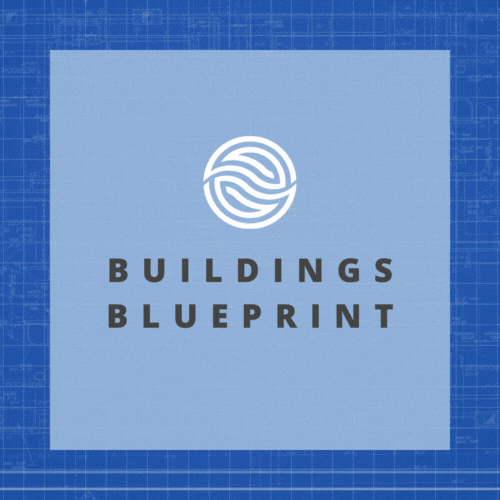

Buildings Blueprint October – December 2024
What SEEA Staff is Reading
—
Energy for All Y’all shares powerful stories of communities driving energy equity in the Southeast. Discover how they’re shaping a more inclusive energy future here.
An article by the New York Times highlights a growing issue: as natural disasters grow more frequent and unpredictable, insurance companies are increasingly refusing to renew policies in high-risk areas. In the Southeast, this challenge is especially significant, with communities facing heightened vulnerability to hurricanes, flooding, and other extreme weather events. This trend leaves homeowners vulnerable and exposes significant gaps in traditional insurance coverage.
The U.S. Department of Energy (DOE) has determined that the 2024 update to the International Energy Conservation Code (IECC) will improve energy efficiency in residential buildings. According to a technical analysis by the Pacific Northwest National Laboratory (PNNL), homes built to meet the 2024 IECC are expected to achieve 7.80% savings in on-site energy use, 6.80% savings in overall energy use, and 6.60% savings in energy costs across the country. This determination aligns with the requirements of the Energy Conservation and Production Act (ECPA). For supporting technical analysis, previous model energy code determinations, and commercial building energy code analyses, find more here.
—
Resources
—
Insulation is vital for energy efficiency, comfort, and reducing costs. Curious about how insulation works, its benefits, and how it can save you money? Read our latest blog to learn more about building insulation and how it impacts your home’s performance.
SEEA staff has recently published a blog on the role of Building Performance Standards (BPS) in addressing energy efficiency and decarbonization in the built environment, with a focus on their potential impact in the Southeast. This blog will cover what Building Performance Standards (BPS) are, how they differ from traditional building codes, why they are an effective strategy for meeting energy efficiency goals, and the unique challenges of implementing them in the Southeast. Click here to read the blog and learn how BPS can transform our buildings into resilient, energy-efficient assets.
—
SEEA member, Building Efficiency Resources (BER) is offering FREE training on RESNET’s National Standards for Sampled Ratings (Addendum 46), which will take effect on July 1, 2025. At that time, all Sampled Ratings projects must follow the updated procedures in MINHERS Chapter 6. With the current voluntary compliance period, this is a great opportunity to get a head start.
The training includes interactive modules and practical exercises to help you build the skills needed for success. It’s designed to support both seasoned professionals looking to stay up-to-date and newcomers eager to learn the ropes.
The U.S. Department of Energy (DOE) is partnering with Google to help homeowners find Energy Skilled™ professionals through Google Search and Maps. This DOE designation highlights contractors with the expertise to perform high-quality energy upgrades, like home audits and heat pump installations. The initiative makes it easier for people to save money, improve home comfort, and access Inflation Reduction Act tax credits. It also supports workforce development by encouraging states to use the Energy Skilled certifications to guide funding and create approved contractor lists.
The Association of Energy Services Professionals (AESP) is seeking skilled energy experts to join its institute as trainers. If you excel at engaging learners, delivering effective training, and promoting courses, apply by January 31st, 2025, at 5 PM PT.
The U.S. Department of Energy has introduced new tools to help contractors easily access tax credits for energy-efficient home appliances. These tools streamline the qualification process for incentives under the Inflation Reduction Act, enabling contractors to assist homeowners with energy-efficient upgrades. Over 2.3 million families have already claimed this credit, saving more than $2 billion in total. Learn more about these resources here.
—
Regional News
We’re excited to highlight the Buildings UP Phase 2 winners from the Southeast and U.S. Islands region, who are leading the way in energy efficiency and sustainability. We want to congratulate Shifted Energy Inc. from Honolulu, HI, which is advancing whole-home efficiency and energy resilience in native and frontline communities. Shifted Energy will receive a $400,000 cash award and technical assistance to continue their impactful work.
Winners are eligible to advance to Phase 3, where they may receive up to $400,000 in cash prizes and technical assistance to scale energy efficiency building upgrades. Eight additional Southeast teams are competing for Phase 3, with final submissions due in July of 2025 and awardees announced soon after. ——————————————————————————————————————————
The Community Lighthouse project, a partnership between Louisiana and local organizations, was successfully tested for the first time during Hurricane Francine, marking a significant achievement. The initiative, which installs solar panels on churches and community buildings, transforms these spaces into off-grid refuge centers after storms. Outfitted with charging stations, food, water, and deployable batteries from the Footprint Project, the Lighthouses provided essential support in the immediate aftermath of the hurricane. All ten Lighthouses were activated, proving the effectiveness of this solar-powered network in delivering relief during extreme weather events. This successful deployment has received national and local media attention and highlights the importance of building resilient electricity hubs to support communities in disaster-prone areas like Louisiana.
——————————————————————————————————————————
Georgia’s Home Energy Rebates offer incentives for households to purchase and install electric appliances, insulation, air sealing, HVAC systems, and other energy-saving home improvements. Eligible households can receive up to $16,000 in savings based on income and/or expected energy savings. Through the Home Efficiency Rebates (HER) and Home Electrification and Appliance Rebates (HEAR), Georgians can access rebates for whole-home energy retrofits or appliance upgrades, with rebate amounts determined by energy savings and household income. Click here to learn more about how you can save on energy-efficient home upgrades and improve your home’s comfort!
SEEA is hiring for our Buildings team!
Reducing greenhouse gas emissions in buildings, or building decarbonization, is an essential strategy for achieving emission reduction goals, managing housing and utility costs, and creating healthy facilities with improved indoor air quality. The Southeast Energy Efficiency Alliance (SEEA) seeks qualified candidates to change the status quo of building energy efficiency in the Southeast by planning and implementing clean energy programs and projects. These positions will cultivate expertise and resources, engage with stakeholders to understand their distinct needs and perspectives, and support processes and special projects to leverage available resources for SEEA initiatives
Buildings Program – Senior Manager
The manager / senior manager is responsible for the management, supervision, and continued development of SEEA’s portfolio of projects and programs. The position collaboratively guides individuals and teams to achieve program outcomes, engages with external stakeholders to understand their needs and provide insight on policy decisions, and leads the development and funding of new initiatives. This position will provide subject matter expertise across the organization and ensure that project goals align with SEEA’s mission and goals.
Reporting to the Director of Technology and Market Solutions, the manager / senior manager will support initiatives including, but not limited to, building energy codes, building energy efficiency programs, and workforce development efforts while contributing to SEEA’s cross-functional work. This position will build partnerships with state and local governments, nonprofits, academia, businesses, and utilities to support SEEA’s work across 12 states and five U.S. territories.
Buildings Program – Associate
This program associate will report to the built environment senior program manager to support initiatives including, but not limited to, building energy codes, building energy efficiency programs, and workforce development efforts while contributing to SEEA’s cross-functional work. This program associate will build partnerships with state and local governments, nonprofits, academia, businesses, and utilities to support SEEA’s work across 12 states and five U.S. territories.
Join us in making a lasting impact—learn more and apply today!
——————————————————————————————————————————
Building Performance Standards (BPS): Driving Energy Efficiency and Decarbonization in Existing Buildings
By Elizabeth Willis
Buildings account for nearly 40% of the energy consumed annually in the United States, making them not only one of the largest contributors to greenhouse gas emissions but also one of the most promising sectors for meaningful improvement. Even small gains in building efficiency can have an outsized impact, driving significant emissions reductions and positioning buildings as a critical focal point for climate action.
As cities and states across the U.S. begin implementing ambitious climate plans, Building Performance Standards (BPS) are emerging as a powerful and effective policy tool. By focusing on improving the energy efficiency of existing buildings, BPS policies fill a gap that traditional building codes—primarily aimed at new construction—fail to address. This is especially critical because most of the buildings that will be in use by 2050 have already been built. Achieving meaningful emissions reductions requires modernizing the aging building stock to meet higher energy performance standards. Building Performance Standards (BPS) help accomplish this by driving energy efficiency improvements, lowering operational costs, and reducing greenhouse gas emissions while delivering broader benefits such as improved air quality, job creation, and community health.
In this post, we’ll delve into the fundamentals of Building Performance Standards, their importance in advancing climate goals, the challenges of implementing them, and why they hold particular promise for the Southeast, where unique hurdles intersect with urgent needs for equity-driven energy policy.
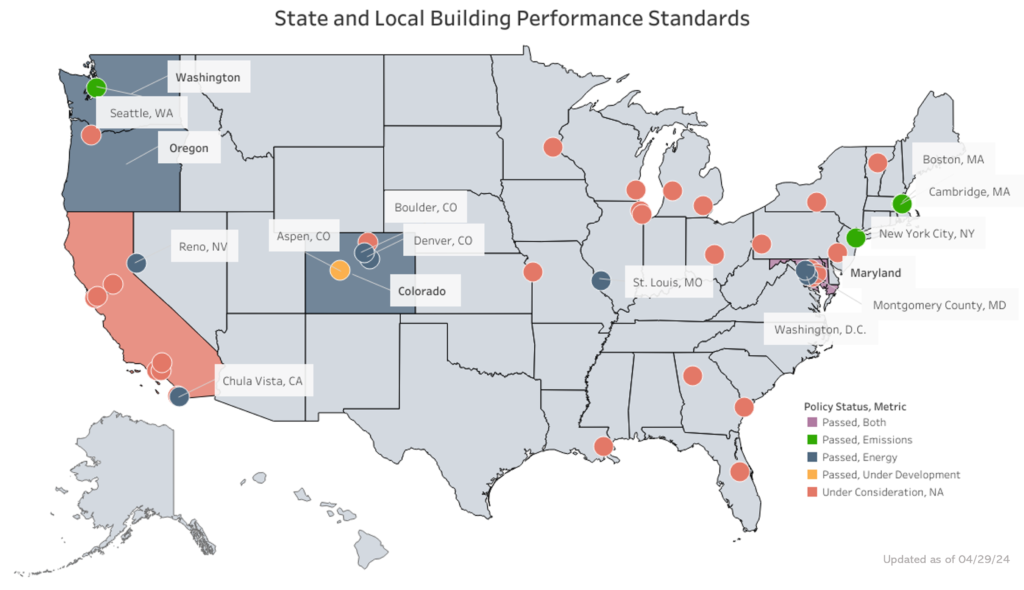

Map by U.S. Department of Energy
What Are Building Performance Standards (BPS)?
Building Performance Standards (BPS) are policies that require existing buildings to meet specific energy or emissions performance targets. These policies are typically adopted by municipalities or states seeking to cut energy consumption, reduce carbon emissions, and improve public health. BPS policies typically focus on large commercial and multifamily buildings, requiring owners to meet measurable benchmarks that get more stringent over time, mandating continuous improvement in the buildings’ performance.
Unlike traditional building codes, which focus on prescriptive requirements for new construction, BPS take an outcome-based approach. Property owners are granted the flexibility to choose the strategies that work best for their buildings, whether it’s retrofitting HVAC systems, improving insulation, installing renewable energy systems, or upgrading windows. What matters is the result: improved energy performance that aligns with the jurisdiction’s climate and energy goals.
The brilliance of BPS lies in its focus on existing buildings—a critical yet often overlooked segment of the built environment. While new buildings constructed under modern codes already achieve high efficiency levels, older structures usually lag behind. By requiring existing buildings to improve their performance, BPS ensures that the entire building stock contributes to long-term energy savings and carbon reductions.
The Benefits of BPS
Building Performance Standards (BPS) offer a spectrum of benefits that extend beyond energy efficiency. They drive substantial energy savings, lower greenhouse gas emissions, and enhance the functionality of existing buildings. By modernizing aging infrastructure, BPS boost property values, stimulate local construction jobs, and improve indoor living conditions, promoting better air quality, comfort, and productivity for occupants. Communities benefit from cleaner outdoor air, improved public health, and measurable progress toward climate goals. Furthermore, these standards provide state and local governments with actionable insights, increase market transparency, and strengthen tenant satisfaction by fostering sustainable and efficient building operations.
Why Building Performance Standards Are Essential
Buildings are at the center of the climate challenge—and the solution. Accounting for nearly 40% of energy consumption in the U.S., buildings are one of the largest contributors to greenhouse gas emissions. Yet, they also represent a massive opportunity for progress.
Most of the buildings we rely on today will still be in use decades from now. Focusing exclusively on making new buildings energy-efficient isn’t enough to meet our climate goals. Instead, we need policies that drive retrofitting and modernization in existing structures, where the potential for energy savings is most significant.
This is where BPS policies shine. By setting clear, measurable performance standards, they provide a structured pathway for building owners to upgrade their properties over time. Jurisdictions with ambitious climate action plans—such as Washington, D.C., and New York City—are leveraging BPS to reduce emissions and energy use across their building stock, demonstrating the potential for other cities and states to follow suit.
Challenges to Implementing BPS in the Southeast
The Southeastern United States faces unique challenges that make implementing BPS both more complicated and more necessary. This region, characterized by high energy consumption, aging infrastructure, and inequities in energy access, provides a vivid case for why BPS policies are needed—and what makes them challenging to implement.
One of the primary challenges to building innovation in the Southeast is the regulatory environment . States like Tennessee and Kentucky prohibit local jurisdictions from adopting building policies that go beyond state-mandated codes. This creates a roadblock for cities like Nashville and Louisville, which have expressed interest in BPS but are unable to move forward under current laws.
Another significant hurdle is the prevalence of historic buildings in the region. While these structures are culturally and architecturally valuable, they are often expensive and difficult to retrofit for energy efficiency. Preservation restrictions can further complicate efforts to modernize these buildings, limiting the types of upgrades that can be made.
Perhaps the most pressing—and often overlooked—challenge in the Southeast is the region’s high energy burden and widespread energy insecurity. The Southeast has the highest proportion of households in the U.S. that spend an unsustainable percentage of their income on energy costs. This problem disproportionately affects low-income families and communities of color, many of whom struggle to afford consistent and reliable energy.
Energy insecurity forces families to choose between paying their utility bills and meeting other basic needs like food, medicine, or rent. By reducing energy consumption and lowering energy bills, BPS policies have the potential to alleviate this burden, creating a more equitable energy future. However, historic disinvestment in underserved communities complicates this process. Many property owners in these neighborhoods lack access to the capital needed for retrofits, perpetuating a cycle of inefficiency and inequity.
Despite these challenges, the Southeast represents an immense opportunity for BPS to make a meaningful impact—especially when policies prioritize equity and target resources to areas that need them most.
Establishing Benchmarking as a First Step
Implementing a full-scale BPS policy begins with benchmarking. A benchmarking policy requires building owners to measure and report their energy use, creating a comprehensive dataset that helps jurisdictions understand the energy performance of their building stock.
Benchmarking is a foundation for future BPS policies that sheds light on the energy performance of each building in a particular jurisdiction and provides a way to compare buildings. It also raises awareness among property owners, often spurring voluntary improvements before mandatory policies are enacted. For example, Atlanta’s voluntary benchmarking policy has provided valuable insights into energy consumption patterns, though the lack of required performance targets limits its potential to drive impactful upgrades.
Leading by Example with Public Buildings
Many jurisdictions begin their BPS journey with government buildings, using them as a proving ground for the policy. By mandating performance standards on public facilities, cities and states can demonstrate the feasibility of retrofitting projects, leading by example and highlighting the benefits of energy upgrades.
This “lead by example” approach generates momentum for broader public adoption and helps refine the policy before extending it to the private sector. Public buildings provide a controlled environment for testing strategies, making them ideal starting points for BPS implementation.
Conclusion: Building a Sustainable and Equitable Future
With its unique challenges, the Southeast represents both a significant hurdle and an unparalleled opportunity. By prioritizing energy equity and targeting resources to underserved communities, BPS policies can do more than just reduce emissions—they can improve quality of life, alleviate energy burdens, and foster long-overdue investments in historically disinvested neighborhoods.
As cities and states across the country work to meet ambitious climate goals, BPS offers a powerful tool to ensure that progress is inclusive, impactful, and far-reaching. Building Performance Standards are more than just an energy policy—they’re a pathway to a more sustainable, equitable, and resilient future.
Why We Should Insulate Homes
By: Olivia Begalla & Amy Lovell
Building insulation is a critical component of energy-efficient design, providing resistance to heat flow to enhance the overall comfort and efficiency of a home. Proper insulation helps maintain a stable indoor temperature, reducing the need for heating in the winter and cooling in the summer. This not only improves comfort but also significantly lowers energy bills and decreases environmental impact by reducing energy consumption.
There are two primary types of insulation installations: continuous insulation and cavity insulation. Continuous insulation spans across structures without interruptions and is commonly installed on the exterior of the home. In contrast, cavity insulation is located within wall cavities, fitting between framing members. Insulation materials include fiberglass, cellulose, foam, and natural fibers, each offering unique benefits. These may be applied in rigid sheets, rolled from batts, blown as loose material, or sprayed in an expanding foam. The U.S. Department of Energy offers a comprehensive guide to insulation materials, helping homeowners and builders choose the best options for their needs.
Heating and Cooling Homes
An important goal for a home is to maintain an indoor temperature that is safe and comfortable, and at the same time, affordable. There are different challenges to maintaining comfortable temperatures in winter and summer, but the principles are the same. Heat will flow from hot to cold, and the flow is faster when the temperature differences are the highest.
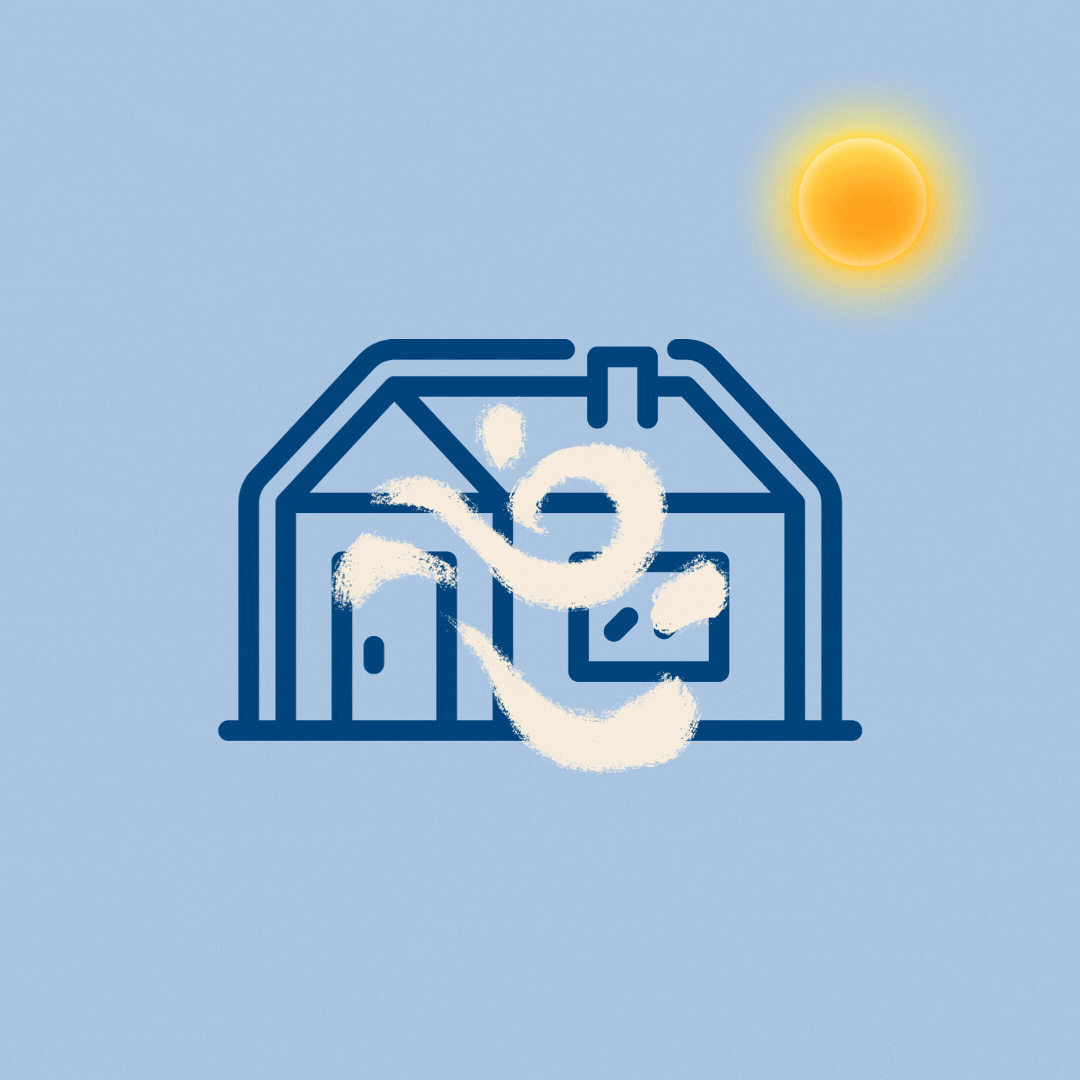

On a spring day when it is 64° F outside and the house is 68° F inside, there is only a 4° difference, and the heat flow is minimal.
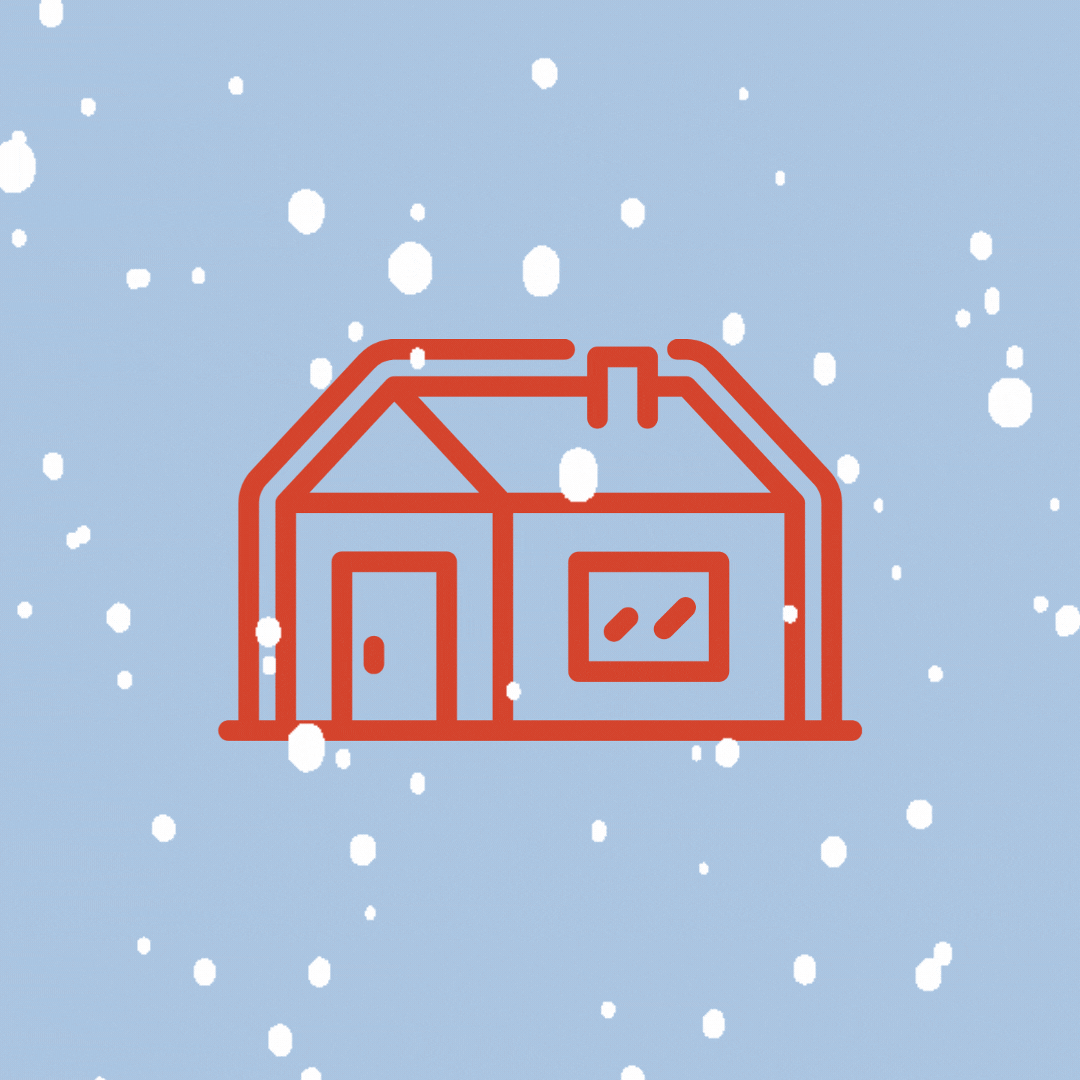

However, on a colder day when it is 35° F outside, the temperature difference increases to 33°. This larger difference causes the house to lose its heat at a more rapid rate, requiring greater energy input into the home to maintain the same indoor temperature.
Degree days are a measure of how cold (heating) or how hot (cooling) a location is relative to a standard indoor temperature. They allow us to compare one location to another and also to compare one year to another at the same location. Importantly, we must consider weather when we analyze impacts of energy efficiency upgrades, such as adding insulation so that we are not confusing our results with having, for example, an unusually warm winter.
In the Southeast, our intuition might tell us that our focus should be primarily on cooling, but the data tell a different story for much of our region. Figure 1 shows that heating degree days far outnumber cooling degree days in the Southeast*, because both the temperature differences are larger, and there are more days each year that require heating.
Figure 1: Heating and Cooling Degree Days in the Southeast*
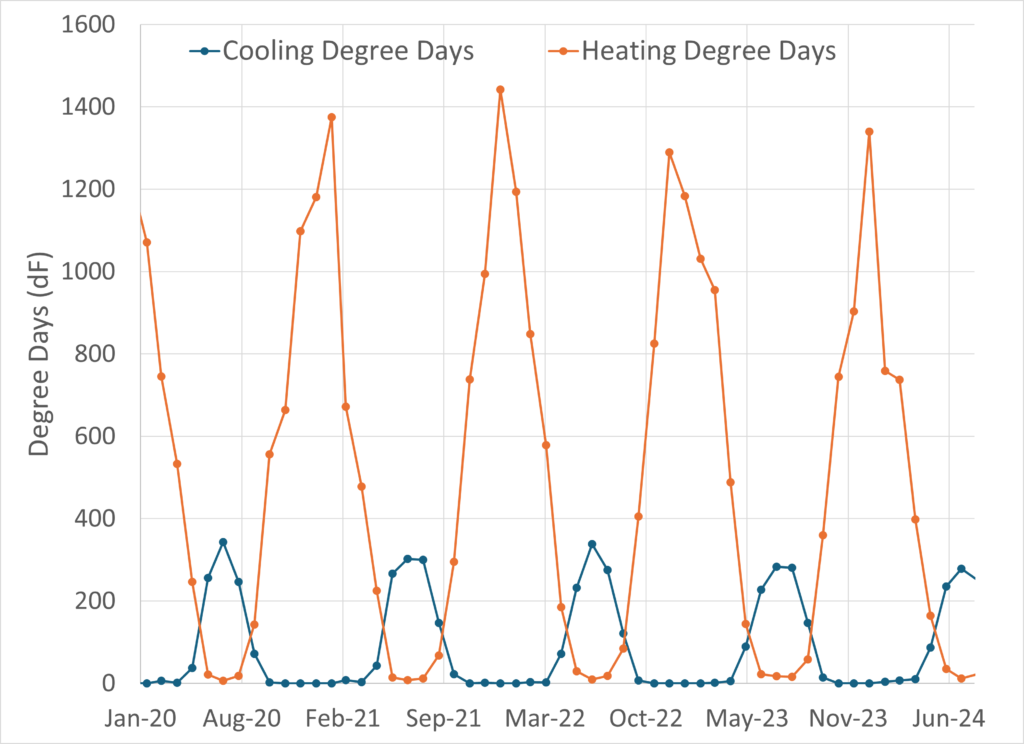

*Southeastern states include the Atlantic coast from Florida to Virginia, plus Alabama and Tennessee
Data Source: NOAA National Centers for Environmental Information,
Building Energy Codes and R-Values
The goal of insulation is to resist heat flow, and the ability to resist is measured in the R-value of the insulation that is installed. R-values are always measured for an assembly, so insulation installation quality is critical to performance. Higher R-values do a better job of slowing down the heat flow, leaving the home occupant more comfortable, and with a lower energy bill. Most insulation is some type of fluffy, low-density material that captures pockets of air and keeps those pockets of air from flowing easily to the spaces beyond. Sometimes, these are paired with a radiant barrier, which is usually a shiny material that reflects the heat back where it came from.
Building energy codes specify minimum R-values for insulation based on climate zones and for different parts of the home. Across the Southeast, many states currently enforce energy codes that fall below the most recent, 2021 International Energy Conservation Code (IECC). To explore current insulation requirements for each state, visit the Insulation Institute’s Codes and Standards Page.
However, homes in the Southeast can still be built to meet or exceed the 2021 IECC standards. These standards reflect modern advancements in technology, offering greater cost-effectiveness and resilience for today’s needs. The table below outlines the insulation requirements specified in the 2021 IECC for Southeast Climate Zones.
Table 1: IECC Insulation Requirements
| Climate Zone | Uninsulated Attic | 3-4 Inches of Existing Attic Insulation | Uninsulated Floor | Uninsulated Wood-Frame Wall | Insulated Wood Frame Wall |
| 1 | R30-R49 | R19-R38 | R13 | R13 or R0 + R10 CI* | N/A |
| 2 | R49-R60 | R38-R49 | R13 | R13 or R0 + R10 CI | N/A |
| 3 | R49-R60 | R38-R49 | R19 | R20 or R13 + R5 CI or R0 + R15 CI | Add R5 CI |
| 4 except Marine | R60 | R49 | R19 | R20 + R5 CI or R13 + R10 CI or R0 + R15 CI | Add R10 CI |
| 4 Marine and 5 | R60 | R49 | R30 | R20 + R5 CI or R13 + R10 CI or R0 + R15 CI | Add R10 CI |
Data Source: U.S. Department of Energy
Though summer heat can be intense, winter conditions have a stronger influence on the insulation recommendations, largely because of the higher heating degree days illustrated in Figure 1. Within the building, since most insulation materials are low in density, they require a lot of space to act effectively.
For most climate zones in the Southeast, attic insulation of up to R-60 and wall insulation up to R-20, or an equivalent in continuous insulation, is specified in the 2021 International Energy Conservation Code (IECC), as shown in Table 1. Continuous insulation can be installed at the time of construction or during renovations. A typical attic design permits the installation of many inches of thick insulation to protect the living spaces below from heat loss, while on the other hand, the wall thickness may limit how much cavity insulation can be installed. Walls constructed with 2×4 wood studs, for example, can have R-15 insulation in the wall cavities. The Insulation Institute estimates that compressing thicker insulation into thinner wall gaps reduces its effective R-value.
The ground has a higher density and heats and cools more slowly than the surrounding air, so basements and foundations that are below ground will need less insulation to protect the home from underneath. Raised homes or other types of floors with direct exposure to air flow require greater R-values, particularly in colder climate zones.
Insulation batting is manufactured in rolls, usually of glass fibers, with thickness according to the expected depth of the construction materials. Loose insulation of cellulose or fiberglass can be blown into attics to a depth that produces the desired R-value. Over time, the insulation may compress or be damaged by water or pests, which can reduce its effectiveness. In addition, recommendations are updated periodically as knowledge and technology improve, so many existing homes may need attention to the level of insulation. 2024 research sponsored by the North American Insulation Manufacturers Association (NAIMA) reveals that 89% of US single-family homes are under-insulated! Is yours one of them? ENERGY STAR offers helpful guidance on how to assess your insulation levels and understand the recommended R-values for retrofitting.
Retrofitting your home with proper insulation can significantly improve comfort and reduce costs. Table 2 below illustrates the estimated utility bill savings from sealing and insulating homes in different climate zones across the South, demonstrating how such upgrades can lead to meaningful reductions in heating and cooling energy use.
Table 2: Estimated Heating and Cooling Savings from Home Sealing and Insulating
| Climate Zone | Estimated Annual Utility Bill Savings (%) |
| 4 | 17% |
| 3 | 14% |
| 2 | 9% |
| 1 | 7% |


Figure 2: SEEA Research Associate Amy Lovell captured this thermal infrared photo in her home, where she discovered a panel of insulation had fallen down into a kneewall attic. Where the panel was missing, more heat could transfer between indoors and outdoors, with a visible thermal effect.


Figure 3: This thermal infrared photo illustrates that the insulation captured in the wall was likely damaged when the roof leaked in the past. Compared to adjacent sections of the wall, the insulation is still working somewhat, but not as effectively as in areas that were not degraded. The windows in this photo also appear in blue and purple colors, indicating they are also colder due to increased heat loss across the glass.


